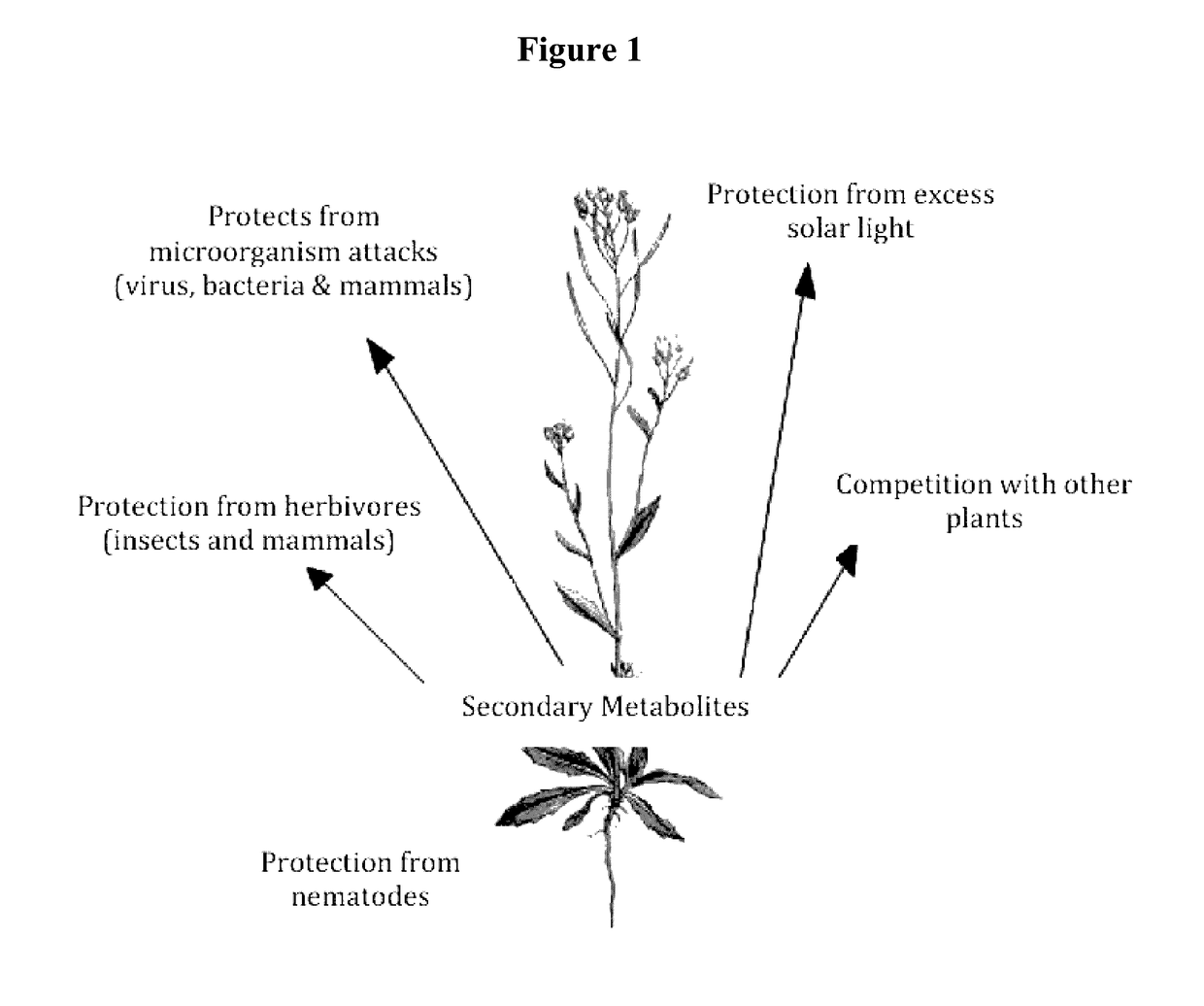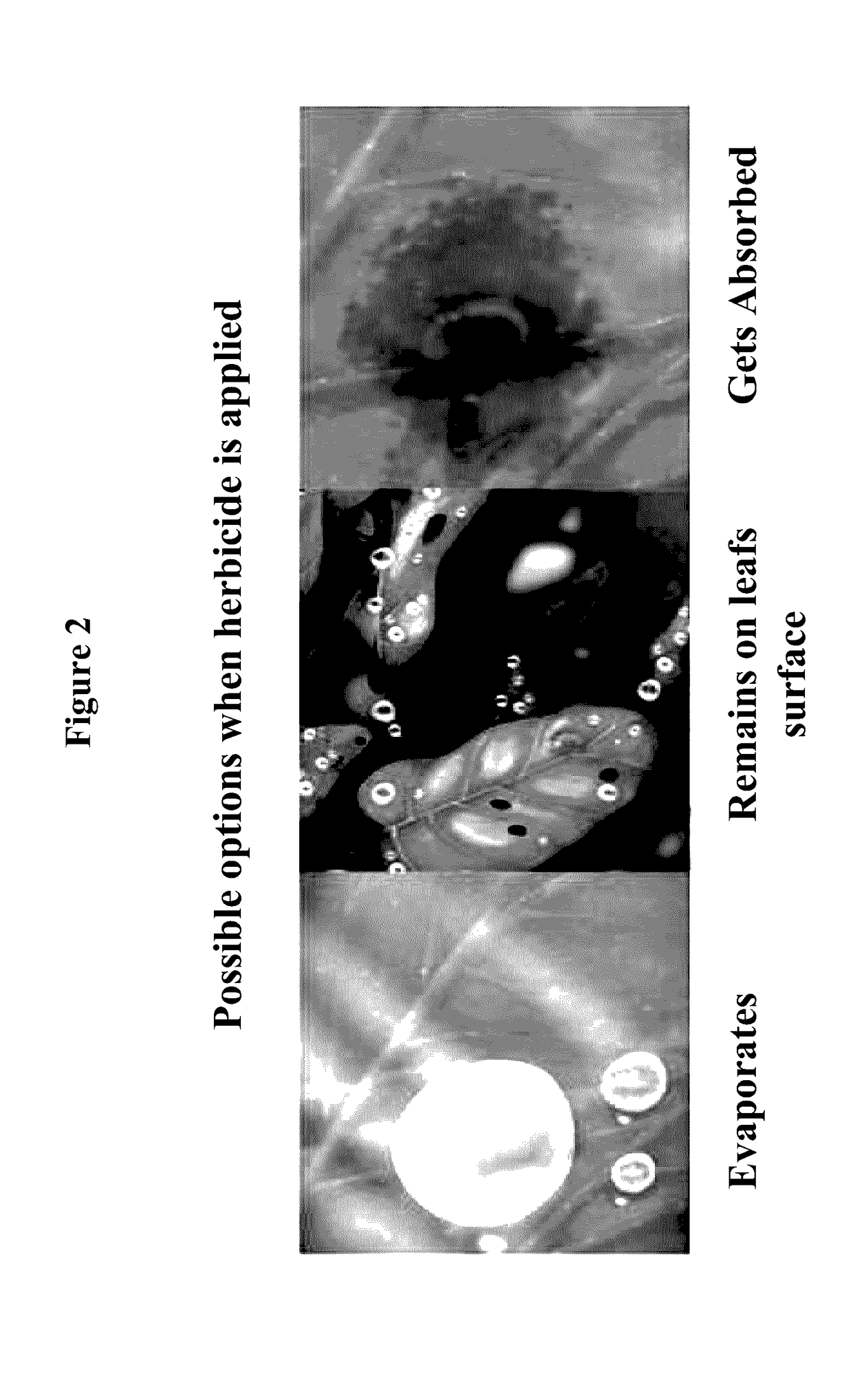Enhancer compositions for agricultural chemicals and agricultural chemical compositions
a technology of agricultural chemicals and compositions, applied in the field of agricultural chemical compositions, can solve the problems of human and animal health risks, significant enhancement of the effect of active ingredients in agricultural products, and possible adverse ecological effects caused by chemicals
- Summary
- Abstract
- Description
- Claims
- Application Information
AI Technical Summary
Benefits of technology
Problems solved by technology
Method used
Image
Examples
examples
[0316]As will be appreciated by those skilled in the art, the following examples are representative of the present invention. All formulations herein described may be further optimized, as all such further development should be considered within the scope of the present invention.
[0317]The herbicidal, insecticidal, fungicidal, miticidal and pesticidal action of the compositions described herein can be seen from the examples which follow. While the individual active compounds may show weaknesses in their action as an individual agent, the combination shows a synergistic action, namely that which exceeds a simple sum of the components.
example i
[0318]The enhancer of the invention is made from a multiplicity of natural materials including essential oils. The enhancer has a multiplicity of components that are manufactured separately first and then mixed with other phytochemicals by processes described herewith.
[0319]All water used in the methods of the invention is potable water which has been pre-treated overnight (at least 8 hours) with a metal such as copper, aluminum, iron, gold, platinum, palladiun, silver as well as other metals from the periodic table which are not reactive or toxic with water. The metal can be in the form of a powdered metal, metal flakes, metallic sheets, or metal screens or plaques having a multiplicity of voids. This water is referred to as biodynamic water. The water after treated with a metal may also be treated with ambient air that has been ionized using an ionizer.
Part A
[0320]The following components (Table 5) are used to make Part A using the stepwise procedure outline below:
TABLE 5AMOUNTING...
example ii
Part B
[0329]The following components are used to make Part B using the stepwise procedure outline below:
TABLE 6INGREDIENTSAmountBanana Essential Oil600ccCinnamon Essencial Oil600ccCoconut Essential Oil600ccVanilla Essential Oil1.200ccUrea or other nitrogen source25kg.Biodynamic WaterBalance tocomplete 130 LTotal Product130.0Kg
[0330]1. In an empty 130-liter container place:
[0331]a. The Essential oils
[0332]b. Urea
[0333]c. Add the biodynamic water until filling the container to 130 L while blending with a blender until all materials are fully homogenized (about 3 minutes).
[0334]d. Place in 30-liter containers and seal hermetically.
[0335]e. Part B is now complete for future use as an ingredient for preparation of EPAC precursors.
PUM
 Login to View More
Login to View More Abstract
Description
Claims
Application Information
 Login to View More
Login to View More - R&D
- Intellectual Property
- Life Sciences
- Materials
- Tech Scout
- Unparalleled Data Quality
- Higher Quality Content
- 60% Fewer Hallucinations
Browse by: Latest US Patents, China's latest patents, Technical Efficacy Thesaurus, Application Domain, Technology Topic, Popular Technical Reports.
© 2025 PatSnap. All rights reserved.Legal|Privacy policy|Modern Slavery Act Transparency Statement|Sitemap|About US| Contact US: help@patsnap.com



